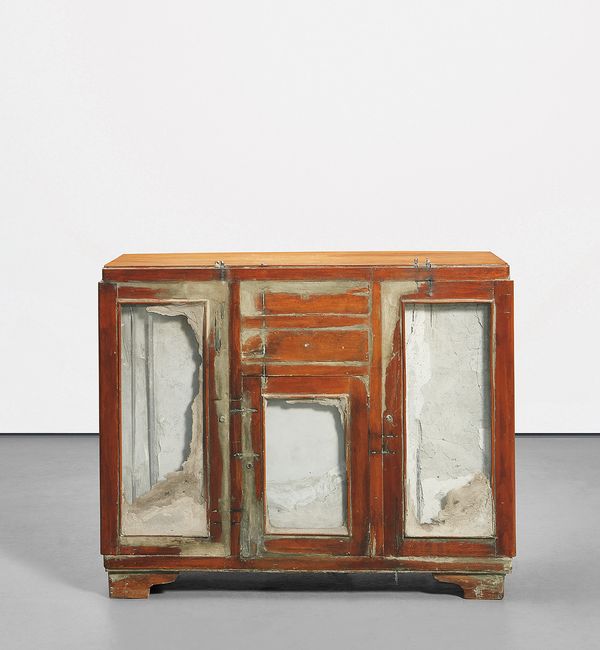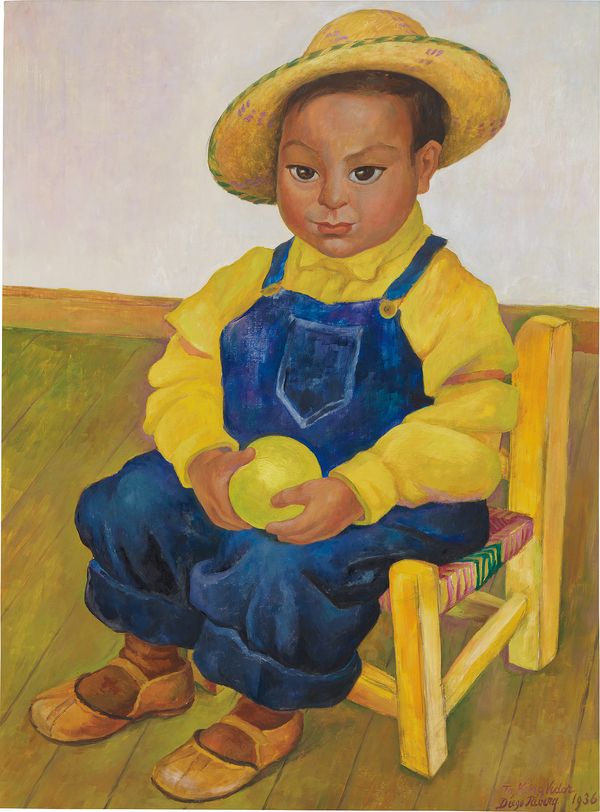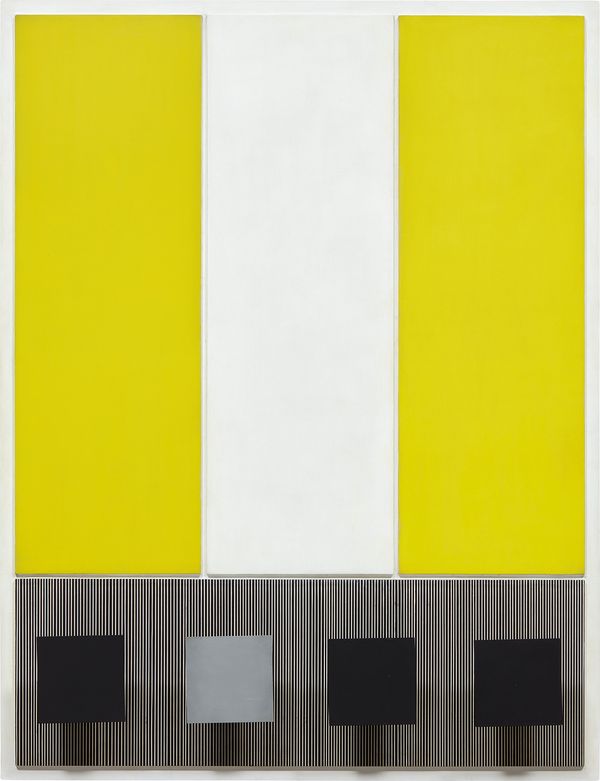Now on view at 450 Park Avenue, Tunga Revolution, 2007, highlights our exhibition of 20th Century & Contemporary Art
This season's 20th Century & Contemporary Art sales are anchored by significant works of Latin American art—for example, Carmen Herrera's Blanco y Verde, 1966 from our New York Evening Sale spent over four decades in the artist's personal collection, while Wifredo Lam's Sur les traces, 1945 from our Hong Kong Evening Sale showcases the artist's dynamic Afro-Chinese-Cuban heritage. Here, Phillips' Kaeli Deane presents a group of highlights from our New York Morning and Afternoon sessions on Wednesday 14 November.
Doris Salcedo Untitled, 1995. Wood, cement, iron, glass and lace.
This sculpture comes from Colombian-born Doris Salcedo's best-known body of work and was first exhibited in the Carnegie International 1995, alongside artists like Robert Gober, Cindy Sherman and Franz West. It is an iconic example from the untitled series, featuring a found wooden cabinet filled with cement and iron bars. The sculpture functions as a memorial to those who lost their lives during Colombia's Civil War as well as a reminder of the weighty burden of grief felt by their loved ones. These worn, domestic objects thus become charged with emotional significance and take on a reverential quality. Salcedo's deeply personal approach to universal issues, combined with her poetic use of materials, has solidified her position at the forefront of contemporary art.
Tunga Revolution, 2007. Brass, aluminum, braided iron wires covered with nylon, fabric lampshade, wiring and light bulb.
Brazilian artist Tunga drew upon Surrealism as a primary influence, yet his work also has a spiritual nature. Like an alchemist, he combined simple objects to create sculptural installations that transform the energy in the space around them, thereby captivating viewers. This work, from a series he created in 2007, is an otherworldly embodiment of a quotidian experience: the hypnosis of an insect captivated by light. Made from a tall, standing lamp entwined with colossal metal wings, chains and pins, this sculpture is disconcerting yet magnetizing in its appeal. Like a fated moth, the viewer is drawn in by curiosity and compelled by the complex beauty of the work. Strange and extraordinary, this work is emblematic of the artist's oeuvre.
Ana Mendieta Untitled: Silueta Series, Iowa, 1979. Lifetime color photograph.
This work is a rare, unique lifetime print by Cuban-born artist Ana Mendieta that epitomizes her early preoccupation with nature and the female body. Mendieta was sent to an orphanage in Iowa as a Cuban exile at the tender age of 12. This deeply affected her artistic practice and led to a series of staged photographs in which she left traces of her body in the earth, in hopes of facilitating a personal connection with a foreign land. In this particular work, the artist utilized flowers to create her own form, thereby physically rooting herself to the earth and stimulating new growth. Mendieta, whose life was tragically cut short, left a sizable impact on contemporary performance art, and works from this series are increasingly difficult to find.
Diego Rivera Don Lupito, 1936. Oil on masonite.
This vibrant portrait by famed Mexican muralist Diego Rivera has been out of view from the public eye since 1983, when it was acquired by a private collector, who has cherished it ever since. Dedicated to renowned American filmmaker King Wallis Vidor (1894-1982), Don Lupito demonstrates Rivera's deep ties with the United States in the 1930s, where he executed a number of public murals and was the subject of MoMA's second monographic exhibition from 1931-1932, the first being Henri Matisse. During this time, American collectors were eager to acquire Rivera's work, which led to friendships with many of the most important names in the entertainment industry. This delighted Rivera, as for him, cinema was the highest expression of modernity. This charming portrait is an iconic example of his classic depictions of Mexico's youth, depicting a small boy in a straw hat and working class coveralls. It embodies Rivera's adept ability to toe the line between commissioned artist for the captitalist elite and radical champion of Mexico's common man.
León Ferrari Esfera (Sphere), 2006. Stainless steel.
Like fellow Argentina-born artist Lucio Fontana, León Ferrari spent formative years in Italy studying ceramics. In fact, Fontana recognized his younger compatriot's talent early on by inviting Ferrari to take part in the 1954 X Triennale di Milano. Ultimately Ferrari would return to Argentina where he continued his investigations in three dimensions, eventually graduating from ceramics and wood to delicate wire sculptures that investigate a line's physical expression in space. Even early in his career, Ferrari was interested in hanging sculptures, meant to float and move in space. Esfera is one such example that relates both to Calder's mobiles as well as Gego's Dibujos sin papel (Drawings without Paper). The work appears to express a desire to escape gravity, seemingly nodding to space travel, but it also has a linguistic dimension. The wire weaves together like calligraphy yet the final work is illegible, thereby relating to Ferrari's experience living in Argentina under dictatorship—a time when one's beliefs could not be freely expressed. This work is an epic example of the artist's mature work that is deeply rooted in art history and technological advancement.
Jesús Rafael Soto Rectangles et Carres, 1969. Acrylic on wood and metal.
A testament to Jesús Rafael Soto's artistic achievements, this piece is particularly important because of its provenance. Originally sold by Denise René, a pioneer of kinetic and op art in Paris, this work ultimately returned to Venezuela where it became part of the collection of fellow artist Francisco Narvaez. Narvaez recognized the ground-breaking developments of the younger Soto, who although he took a different approach was also preoccupied with developing a new artistic language for the modern time. A masterpiece of color and geometric simplicity, Rectangles et Carres engages with the viewer's perception, affecting visual vibrations as one moves around it in space.






